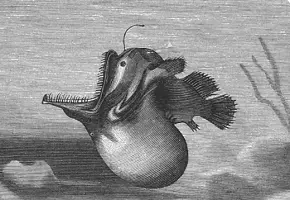Algae that break down cellulose for energy
Cellulose is a polymer of plant origin that performs an important structural support function in cell walls. The cell wall is made up of 40% cellulose, with wood reaching 50% and cotton fibers up to 90%. Cellulose is made up of β-D-glucose molecules linked by β-1,4-O-glucosidic bonds. By breaking the bonds that form cellulose, pure glucose is obtained, which can be used as a source of energy at the cellular level . However, animals cannot perform this function as they lack the necessary enzyme to hydrolyze (break through the addition of a water molecule) the β-1,4-glucosidic bonds.
An exception to this would be some mammals such as ruminants and insects such as termites, which are capable of digesting cellulose, but do so thanks to symbiotic bacteria that possess the necessary enzyme. Free-living (non-symbiotic) bacteria and some fungi that live on plant trunks that are capable of digesting cellulose have also been known for decades.
Fungi, unlike plants, are incapable of photosynthesis and need to obtain energy from the degradation of organic matter (that is, they are heterotrophs, not autotrophs). Related to this, certain fungi that grow on wood are among the few organisms with the ability to digest lignin, a very resistant plant phenolic network that requires complex enzymes for its degradation.
The algae that can feed on other algae
Scientists at the University of Bielefeld have discovered that a green algae, Chlamydomonas reinhardtii , possesses the enzyme necessary to degrade cellulose. It is a unicellular green algae, which moves with the help of two flagella and is present in freshwater masses throughout the planet . It is the first known plant with the ability to degrade cellulose, which would allow it (at least in theory) to obtain energy from other plants. However, the alga has chlorophyll and performs photosynthesis, not being the obtaining of glucose through the degradation of cellulose its primary source of energy.
The curious thing about this case is that Chlamydomonas reinhardtii was already an algae of scientific interest before the discovery of the enzyme that hydrolyzes cellulose. Due to its simple cultivation in the laboratory, it has been used for the production of biopharmaceuticals through genetic engineering for years .
In addition, this species along with other unicellular green algae is used to obtain hydrogen as fuel. It has an enzyme that, in the absence of oxygen, produces hydrogen from the photosynthesis reaction. The main problem with this technique is that photosynthesis also produces oxygen, so hydrogen generation is inhibited under natural conditions and it is necessary to remove oxygen from the reaction in order to obtain hydrogen.
The recently discovered property of this species, to digest cellulose, opens up a new world of possibilities in obtaining biofuels . From plant material without any commercial use, such as crop residues, this algae would be able to produce pure glucose, which would be used in obtaining bioethanol by yeasts (in the same process that is used for the brewing, by fermenting glucose in the absence of oxygen). Until now, it was necessary to obtain the enzymes for the degradation of cellulose from fungi, but the use of algae with photosynthetic capacity could simplify the process.
Obtaining bioethanol today
The three methods that are currently used to obtain bioethanol are from glucose, from starch or using cellulose as a raw material. As sources of glucose, vegetables with a high sugar content are used, such as sugar cane or beets, or molasses. This presents a conflict of interest, since the same crops that are used for food are used for the production of fuels.
If you want to obtain bioethanol from starch, potatoes or corn grains are used , which must be treated in a step prior to obtaining glucose. This treatment consists of adding an enzyme that hydrolyzes the starch or adding acid to the mixture of vegetable matter with water. The use of wood is very complex, since it is necessary to degrade cellulose to glucose by means of enzymes present in fungi, or by crushing the wood and using strong acids. The only three countries in the world that produce bioethanol at an industrial level are the USA (from corn), Brazil and Colombia (from sugar cane in both cases).
The use of bioethanol as fuel has the advantage of being a renewable energy and does not emit greenhouse gases into the atmosphere. However, if cereals are used to obtain them (due to their high glucose content), they become more expensive for food.
Another added side effect is that in certain countries the cultivation of plants to obtain biofuels has serious consequences for the environment, as deforestation occurs to increase the area dedicated to cultivation. Thus, taking advantage of the plant matter that is discarded in food crops is doubly useful: a benefit is obtained without causing a negative impact on nature.
More extensive research in the field of biotechnology brings us closer to a future without fossil fuels.




10 Comments